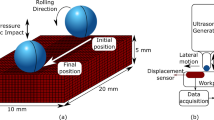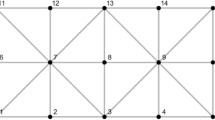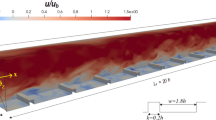Abstract
The asymmetric phenomenon of the rolling process will cause rolling clad plate bending, and the inability to quantify accurately the bending curvature will reduce production efficiency and increase production costs in industrial production. Therefore, this paper establishes a curvature theoretical model of double-layer metal on the basis of the stream function method, which has high accuracy and can be used for predicting the plate curvature after asynchronous rolling. The stream function field, velocity field, and strain rate field model are established based on the geometric relationship of the rolling deformation zone. The total power model is represented by the five-node Gauss quadrature algorithm according to the complex forming process, and then, the real kinematic parameters are obtained by optimizing the total power. The theoretical model of plate curvature caused by linear strain difference and shear strain difference is calculated based on the kinematic parameters optimized from the total power in the final. This paper creatively proposes a method of integrating the positive strain rate and shear strain rate with time to obtain the strain after rolling, which avoids the error caused by the slab method linearizing the non-uniform distribution of shear stress along the vertical, and the nonlinear problems caused by yield criterion in solving the compressive stress. The article analyzes the accuracy of the velocity model and obtains the variation law of total power with reduction ratio and the variation law of curvature with velocity ratio and layer thickness ratio, and some methods to reduce outlet curvature are also proposed. The maximum, minimum, and average relative errors are 12.02%, 0.66%, and 4.95% by comparing theoretical results with experiments, which verifies the accuracy of the analytic model. The calculating time is less than 5 s, which is of great significance for the setting and optimization of rolling process parameters and online prediction.















Similar content being viewed by others
Data availability
Data and materials will be available upon request.
Abbreviations
- \(R\) :
-
Top and bottom work roll radius
- \(r\) :
-
Bonding surface radius
- \({v}_{1},{v}_{2}\) :
-
Top and bottom work roll linear velocity
- \({t}_{i},{t}_{o}\) :
-
Total thickness before and after rolling
- \({t}_{ia},{t}_{oa}\) :
-
Cladding layer thickness before and after rolling
- \({t}_{ib},{t}_{ob}\) :
-
Substrate layer thickness before and after rolling
- \({\Gamma }_{1},{\Gamma }_{2},{\Gamma }_{3}\) :
-
Contact boundary function
- \({\Gamma }_{i},{\Gamma }_{o}\) :
-
Inlet and outlet velocity discontinuity line
- \(\Delta h\) :
-
The rolling reduction
- \({\psi }_{a}^{0},{\psi }_{b}^{0}\) :
-
Basic stream function
- \({\psi }_{a}{\prime},{\psi }_{b}{\prime}\) :
-
Additional stream function
- \({\psi }_{a},{\psi }_{b}\) :
-
Complete stream function
- \({\varphi }_{a},{\varphi }_{b}\) :
-
Volume flow of the layers a and b
- \({a}_{1},{a}_{2},{b}_{1},{b}_{2}\) :
-
Parameters of the velocity gradient function
- \({U}_{xa},{U}_{ya}\) :
-
Horizontal and vertical velocity of the layer a
- \({U}_{xb},{U}_{yb}\) :
-
Horizontal and vertical velocity of the layer b
- \({\stackrel{\cdot }{\varepsilon }}_{xa},{\stackrel{\cdot }{\varepsilon }}_{ya}\) :
-
Horizontal and vertical strain rate of the layer a
- \({\stackrel{\cdot }{\varepsilon }}_{xb},{\stackrel{\cdot }{\varepsilon }}_{yb}\) :
-
Horizontal and vertical strain rate of the layer b
- \({\stackrel{\cdot }{\varepsilon }}_{xya},{\stackrel{\cdot }{\varepsilon }}_{xyb}\) :
-
Shear strain rate of the layers a and b
- \({\stackrel{\cdot }{\varepsilon }}_{ea},{\stackrel{\cdot }{\varepsilon }}_{eb}\) :
-
Equivalent strain rate of the layers a and b
- \({\varepsilon }_{u},{\varepsilon }_{l}\) :
-
The linear strain on the top and bottom surfaces of the clad plate
- \({\stackrel{\cdot }{E}}_{a}({A}_{a}),{\stackrel{\cdot }{E}}_{b}({A}_{b})\) :
-
Deformation power
- \(\stackrel{\cdot }{E}({\Gamma }_{i}),\stackrel{\cdot }{E}({\Gamma }_{o})\) :
-
Shear power
- \({\stackrel{\cdot }{E}}_{a}({\Gamma }_{1}),\stackrel{\cdot }{E}({\Gamma }_{2})\) :
-
Frictional power
- \({A}_{a},{A}_{b}\) :
-
Area of layers a and b in the deformation zone
- \({\tau }_{f1},{\tau }_{f{2}}\) :
-
Shear stress
- \(t\) :
-
The consumption time of the strain
- \(\Delta {v}_{fa}\) :
-
Velocity difference between the top work roll and layer a
- \(\Delta {v}_{fb}\) :
-
Velocity difference between the bottom work roll and layer b
- \(\Delta {v}_{ai},\Delta {v}_{bi}\) :
-
The velocity difference between the inlet velocity and velocity discontinuity line Γi of the cladding and substrate layer
- \(\Delta {v}_{ao},\Delta {v}_{bo}\) :
-
The velocity difference between the outlet velocity and velocity discontinuity line Γo of the cladding and substrate layer
References
Zhao ZL, Gao Q, Hou JF, Sun ZW, Chen F (2016) Determining the microstructure and properties of magnesium aluminum composite panels by hot rolling and annealing. J Magnesium Alloys 4(3):242–248. https://doi.org/10.1016/j.jma.2016.07.003
Zhu B, Liang W, Li XR (2011) Interfacial microstructure, bonding strength and fracture of magnesium–aluminum laminated composite plates fabricated by direct hot pressing. Mater Sci Eng, A 528(21):6584–6588. https://doi.org/10.1016/j.msea.2011.05.015
Liu TT, Song B, Huang GS, Jiang XQ, Guo SF, Zheng KH, Pan FS (2022) Preparation, structure and properties of Mg/Al laminated metal composites fabricated by roll-bonding, a review. Journal of Magnesium Alloys 10(8):2062–2093. https://doi.org/10.1016/j.jma.2022.08.001
Loureiro A, Mendes R, Ribeiro JB, Leal RM, Galvão I (2016) Effect of explosive mixture on quality of explosive welds of copper to aluminium. Materials Design 95:256–267. https://doi.org/10.1016/j.matdes.2016.01.116
Gao HT, Kong C, Yu HL (2023) Lightweight metal laminated plates produced via (hot, cold and cryogenic) roll bonding: a review. Transactions Nonferrous Metal Soc China 33(2):337–356. https://doi.org/10.1016/S1003-6326(22)66111-9
Kumar RV, Keshavamurthy R, Perugu CS, Koppad PG, Alipour M (2018) Influence of hot rolling on microstructure and mechanical behaviour of Al6061-ZrB2 in-situ metal matrix composites. Mater Sci Eng, A 738:344–352. https://doi.org/10.1016/j.msea.2018.09.104
Aboutorabi A, Assempour A, Afrasiab H (2016) Analytical approach for calculating the sheet output curvature in asymmetrical rolling: In the case of roll axis displacement as a new asymmetry factor. Int J Mechanical Sci 105:11–22. 10. 1016/j.ijmecsci.2015.10.016
Li SY, Qin N, Liu J, Zhang XM (2015) Microstructure, texture and mechanical properties of AA1060 aluminum plate processed by snake rolling. Mater Des 90:1010–1017. https://doi.org/10.1016/j.matdes.2015.11.054
Su H, Hou LG, Tian QK, Wang YW, Zhuang LZ (2022) Understanding the bending behavior and through-thickness strain distribution during asymmetrical rolling of high-strength aluminium alloy plates. J Market Res 22:1462–1475. https://doi.org/10.1016/j.jmrt.2022.12.029
Kumar A, Rath S, Kumar M (2020) Simulation of plate rolling process using finite element method. Materials Today: Proceedings 42(2):650–659. https://doi.org/10.1016/j.matpr.2020.11.050
Jiang LY, Zhen T, Yuan G, Huang JB, Wei YY, Li H, Wang P (2020) The mechanical parameters modeling of heavy steel plate snake/gradient temperature rolling with the same roll diameters. Metallurgical Res Technol 117(3):301. https://doi.org/10.1051/metal/2020019
Tian J, Deng JF, Zhou YC, Chang YY, Liang W, Ma JY (2022) Slip behavior during tension of rare earth magnesium alloys processed by different rolling methods. J Market Res 22:473–488. https://doi.org/10.1016/j.jmrt.2022.11.102
Cawthorn CJ, Minton JJ, Brambley EJ (2015) Asymptotic analysis of cold sandwich rolling. Int J Mech Sci 106:184–193. https://doi.org/10.1016/j.ijmecsci.2015.12.012
Akbari Mousavi SAAA, Ebrahimi SM, Madoliat R (2006) Three dimensional numerical analyses of asymmetric rolling. J Mater Process Technol 187:725–729. https://doi.org/10.1016/j.jmatprotec.2006.11.045
Liang H, Hong-shuang D, Dian-yao G (2013) Analysis of sheet curvature in asymmetrical cold rolling. J Iron Steel Res Int 20(5):34–37. https://doi.org/10.13228/j.boyuan.issn1006-706x.2013.05.004
Knight CW, Hardy SJ, Lees AW, Brown KJ (2004) Influence of roll speed mismatch on strip curvature during the roughing stages of a hot rolling mill. J Mater Process Technol 168(1):184–188. https://doi.org/10.1016/j.jmatprotec.2004.09.094
Farhatnia F, Salimi M, Movahhedy MR (2006) Elasto-plastic finite element simulation of asymmetrical plate rolling using an ALE approach. J Mater Process Technol 177(1–3):525–529. https://doi.org/10.1016/j.jmatprotec.2006.04.075
Jiang LY, Huang JB, Zhen T, Le QC, Ma LF (2021) Analytical modeling of plate curvature in snake rolling of heavy aluminum alloy with different deformation zones. Rare Metal Materials Eng 50(5):1626–1634
Qwamizadeh M, Kadkhodaei M, Salimi M (2012) Asymmetrical sheet rolling analysis and evaluation of developed curvature. Int Jof Adv Manufacturing Technol 61(5):227–235. https://doi.org/10.1007/s00170-011-3697-4
Qwamizadeh M, Kadkhodaei M, Salimi M (2014) Asymmetrical rolling analysis of bonded two-layer sheets and evaluation of outgoing curvature. Int J Adv Manufacturing Technol 73(26):521–533. https://doi.org/10.1007/s00170-014-5825-4
Afrouz F, Parvizi A (2015) An analytical model of asymmetric rolling of unbounded clad sheets with shear effects. J Manuf Process 20(1):162–171. https://doi.org/10.1016/j.jmapro.2015.08.007
Hwang YM, Hsu HH, Lee HJ (1994) Analysis of sandwich sheet rolling by stream function method. Int J Mechanical Sci 39(3):598–605. https://doi.org/10.1016/0020-7403(95)93522-8
Hwang YM, Hsu HH (1997) Analysis of plate rolling using the dual-stream function method and cylindrical coordinates. Int J Mech Sci 40(4):371–385. https://doi.org/10.1016/S0020-7403(97)00040-4
Che LZ, Zhang SH, Tian WH, Li Y (2023) A new model for thermal-mechanical coupled of gradient temperature rolling force based on geometrical unified yield criterion. J Manuf Process 101:904–915. https://doi.org/10.1016/j.jmapro.2023.06.050
Zhang SH, Deng L, Tian WH, Che LZ, Li Y (2022) Deduction of a quadratic velocity field and its application to rolling force of extra-thick plate. Comput Math Appl 109:58–73. https://doi.org/10.1016/j.camwa.2022.01.024
Zhang SH, Deng L, Zhang QY, Li QH, Hou XJ (2019) Modeling of rolling force of ultra-heavy plate considering the influence of deformation penetration coefficient. Int J Mech Sci 159:373–381. https://doi.org/10.1016/j.ijmecsci.2019.05.048
Funding
The authors gratefully appreciate the financial support by the National Natural Science Foundation of China under Grant 52175354, the Shandong Provincial Natural Science Foundation of China under ZR2022ME082, and the Central Leading Local Science and Technology Development Fund Project under Grant YDZJSX2022A052.
Author information
Authors and Affiliations
Contributions
Lian-Yun Jiang: conceptualization; writing—original draft preparation; visualization; and project administration.
Gui-Wen Liu: writing—original draft preparation and visualization.
Qi-Qi Ma and Jia-Yu Song: review and editing, and supervision.
Jian-Hui Shi: writing—review and editing, and supervision.
Corresponding author
Ethics declarations
Ethical approval
Not applicable.
Consent to participate
Not applicable.
Consent for publication
Not applicable.
Competing interests
The authors declare no competing interests.
Additional information
Publisher's Note
Springer Nature remains neutral with regard to jurisdictional claims in published maps and institutional affiliations.
Rights and permissions
Springer Nature or its licensor (e.g. a society or other partner) holds exclusive rights to this article under a publishing agreement with the author(s) or other rightsholder(s); author self-archiving of the accepted manuscript version of this article is solely governed by the terms of such publishing agreement and applicable law.
About this article
Cite this article
Jiang, LY., Liu, GW., Ma, QQ. et al. The curvature mathematical modeling of the double-layer metal clad plate by the asynchronous rolling. Int J Adv Manuf Technol 129, 5457–5471 (2023). https://doi.org/10.1007/s00170-023-12674-6
Received:
Accepted:
Published:
Issue Date:
DOI: https://doi.org/10.1007/s00170-023-12674-6




